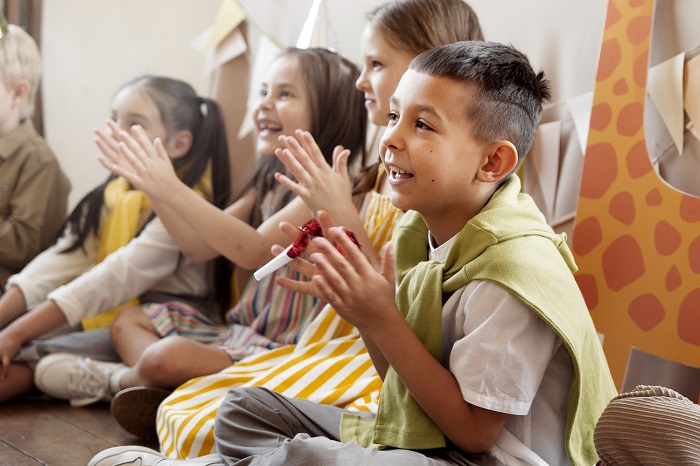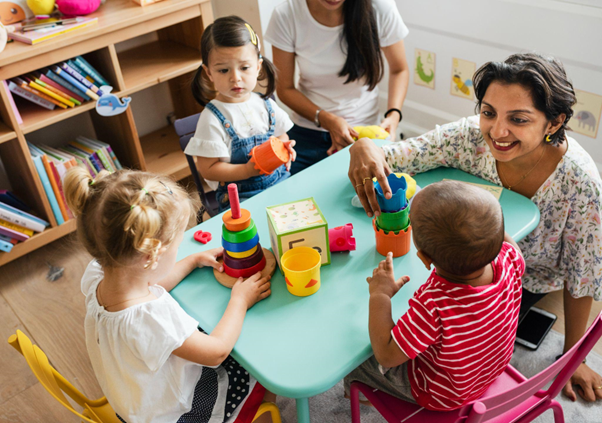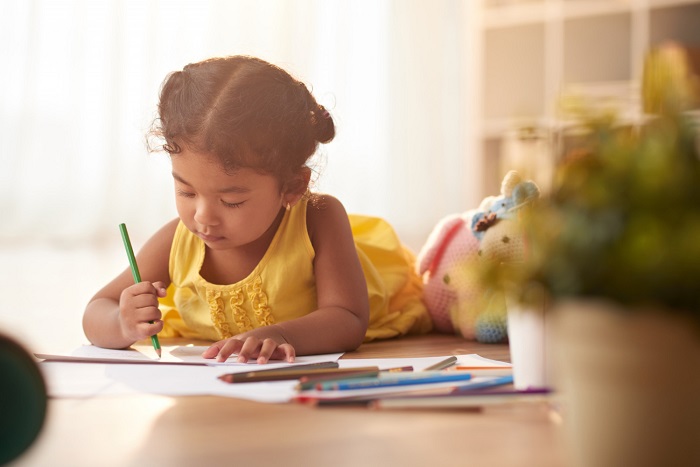Choosing a preschool for your child is a decision that involves considerable thought and care. A preschool is not just a stepping stone in a child’s educational journey; it’s a place where the foundations of their future learning and development are laid. Parents often wonder how the overall health and safety of their children can be ensured in these early educational settings. This article delves into the various aspects of safety measures in preschool – focusing on physical safety, cognitive safety, and emotional safety and well-being.
Physical Safety in Preschool
The Environment
Physical safety in preschools is paramount. This encompasses everything from the structural integrity of the building to the playground equipment used by the children. Preschools should adhere to rigorous health and safety standards. Classrooms should be spacious, well-lit, and ventilated, with safe, non-toxic materials. Fire exits, safety drills, and first aid kits are non-negotiable elements.
Supervision and Child-to-Staff Ratio
Close supervision is crucial in preventing accidents. A low child-to-staff ratio ensures that each child receives adequate attention and care. Staff should be well-trained in emergency procedures and in managing common childhood injuries. Furthermore, background checks for all staff members are essential to ensure a safe environment for the children.
Cleanliness and Hygiene
Preschools must maintain high standards of cleanliness and hygiene to prevent the spread of infections. Regular cleaning of the premises, along with proper sanitation facilities, is essential. Additionally, children should be taught basic hygiene practices, like handwashing, to foster a culture of cleanliness.
Cognitive Safety
Age-Appropriate Curriculum
Cognitive safety involves providing an environment that nurtures and stimulates a child’s mental development. The curriculum should be age-appropriate, engaging, and designed to foster creativity and curiosity. Activities should challenge children but not overwhelm them, ensuring a positive learning experience.
Qualified and Supportive Educators
Educators play a crucial role in cognitive safety. They should be qualified and trained in early childhood education, understanding the unique learning needs of preschool-aged children. Their approach should be supportive and inclusive, catering to the individual learning styles of each child.
Emotional Safety and Well-Being
Nurturing Emotional Development
Emotional safety is about creating an environment where children feel valued, understood, and secure. This includes fostering positive relationships among children and between children and staff. A preschool should provide a supportive atmosphere where children are encouraged to express their feelings and learn to manage them constructively.
Bullying and Discrimination
A key aspect of emotional safety is the preschool’s policy on bullying and discrimination. There should be clear policies in place to address any such issues, promoting a culture of respect and empathy. Staff should be trained to identify signs of bullying or emotional distress and to intervene appropriately.
Ensuring Overall Health
Beyond these safety measures, the overall health of children in preschools is a critical consideration. This includes nutritional meals, opportunities for physical activity, and regular health check-ups. A holistic approach to health ensures that children’s physical, cognitive, and emotional needs are all being met.
The Importance of Comprehensive Safety Policies
Implementing Robust Safety Protocols
A preschool’s commitment to safety is demonstrated through its comprehensive safety policies. These policies should cover all aspects of the child’s day, from drop-off to pick-up. They should detail procedures for emergencies, such as natural disasters, and protocols for less immediate concerns, like dealing with allergies. Regular training for staff on these policies ensures preparedness and a consistent approach to safety.
Continuous Monitoring and Improvement
Safety is an ongoing concern, and the best preschools recognize this by continuously monitoring and updating their safety measures. This could involve regular safety audits, feedback from parents and staff, and staying updated with the latest in early childhood safety research and practices.
Emphasizing a Safe Learning Environment
Safe Learning Materials and Equipment
The choice of learning materials and equipment in a preschool is crucial for ensuring physical safety. Items should be non-toxic, age-appropriate, and free from choking hazards. Additionally, the layout of classrooms should be thoughtfully designed to prevent accidents and facilitate easy movement for children and teachers.
Safe Exploration and Risk-Taking
While safety is a priority, it is also essential to allow children the opportunity for exploration and risk-taking within a controlled environment. This could include supervised climbing or balancing activities, which are important for physical and cognitive development.
Addressing Emotional and Psychological Well-Being
Building Emotional Resilience
Preschools should focus on building emotional resilience in children. This involves teaching them how to deal with frustration, failure, and fear in a supportive environment. Activities that encourage cooperation, sharing, and empathy contribute to a child’s emotional safety and well-being.
Inclusive Environment
An inclusive environment that celebrates diversity and promotes equality is key to ensuring emotional safety. Children should be exposed to different cultures, languages, and abilities, fostering an understanding and acceptance from an early age.
The Role of Communication in Safety
Open Lines of Communication
Effective communication between the preschool and parents is vital for safety. Regular updates about a child’s progress, incidents at the preschool, or changes in policies help build trust and ensure transparency. Parent-teacher meetings, newsletters, and digital communication platforms are effective tools for this purpose.
Encouraging Child Participation
Children should also be encouraged to communicate their feelings, experiences, and concerns. This helps educators identify any issues related to safety and well-being early on and address them appropriately.
In conclusion, when choosing a preschool, it is essential to consider the multifaceted aspects of safety and well-being. Physical safety, cognitive safety, and emotional safety form the pillars upon which a healthy, nurturing, and stimulating preschool environment is built. By ensuring that these safety measures are in place, parents can be confident that they are providing their children with a strong foundation for their future growth and development. This foundation is not only about learning numbers and letters; it’s about nurturing healthy, happy, well-rounded individuals ready to take on the world.
By considering these aspects, parents can make an informed decision that will set the foundation for their child’s future learning and well-being. The right preschool not only educates but also nurtures, protects, and respects each child, preparing them for the many stages of life ahead.
For more such interesting blogs, visit EuroKids.














